-
 bitcoin
bitcoin $114320.977035 USD
-0.40% -
 ethereum
ethereum $4152.439985 USD
-1.75% -
 tether
tether $1.000111 USD
-0.04% -
 xrp
xrp $2.843037 USD
-1.63% -
 bnb
bnb $1013.349380 USD
-1.62% -
 solana
solana $208.362767 USD
-2.10% -
 usd-coin
usd-coin $0.999783 USD
0.00% -
 dogecoin
dogecoin $0.232559 USD
-1.00% -
 tron
tron $0.333491 USD
-1.09% -
 cardano
cardano $0.806310 USD
0.19% -
 hyperliquid
hyperliquid $45.023720 USD
-1.59% -
 ethena-usde
ethena-usde $1.000819 USD
-0.06% -
 chainlink
chainlink $21.241249 USD
-2.11% -
 avalanche
avalanche $30.035416 USD
-0.66% -
 stellar
stellar $0.364984 USD
-2.05%
What's the difference between hidden orders and large orders in Polkadot contracts?
Hidden orders in Polkadot enable private, secure trading via cryptography and privacy-focused parachains, minimizing market impact and front-running risks.
Sep 23, 2025 at 11:55 am
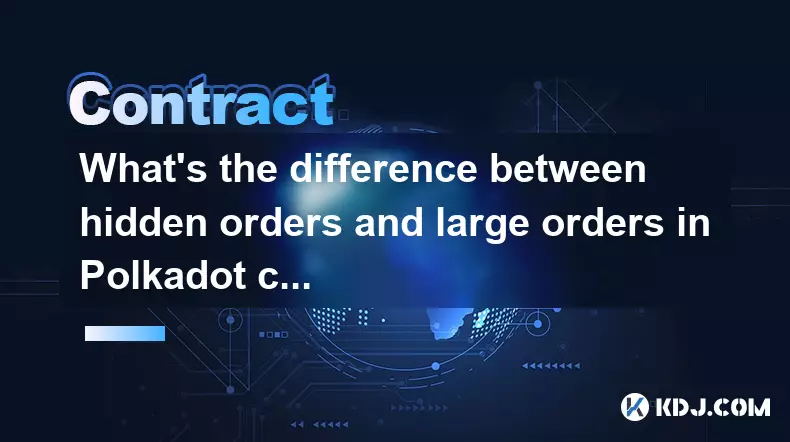
Understanding Hidden Orders in Polkadot-Based Contracts
1. Hidden orders refer to transactions or trade instructions that are intentionally obscured from public view within decentralized exchanges operating on Polkadot-compatible chains. These types of orders are typically used by institutional traders or whales who wish to avoid market impact. By concealing the size and intent of their trades, they prevent front-running and price slippage.
2. In the context of Polkadot smart contracts, hidden orders may be implemented through private mempools or off-chain order books managed by relayers. This ensures that transaction details remain confidential until execution. The use of zero-knowledge proofs or threshold encryption can further enhance privacy, allowing verification without revealing underlying data.
3. Hidden orders rely heavily on trustless intermediaries or cryptographic techniques to maintain integrity while preserving anonymity. Their execution often depends on specialized parachains focused on privacy, such as Manta Network or Integritee, which integrate with Polkadot’s ecosystem to offer secure, confidential trading environments.
The Role of Large Orders in Polkadot Ecosystem Transactions
1. Large orders represent significant trading volumes executed on decentralized platforms connected to Polkadot. Unlike hidden orders, these are usually visible in the public ledger once submitted, making them susceptible to detection by arbitrage bots and other market participants.
2. Due to their size, large orders can trigger substantial price movements, especially on smaller liquidity pools. This visibility often leads to increased slippage and reduced execution efficiency. Traders placing large orders must carefully consider timing, routing strategies, and liquidity availability across different parachains.
3. Execution of large orders frequently involves splitting the trade into smaller chunks across multiple blocks or using automated market maker (AMM) aggregators to minimize impact. Some protocols built on Substrate allow for batched transactions, enabling smoother processing of high-volume trades without overwhelming network throughput.
Key Differences Between Hidden and Large Orders
1. Visibility is a primary distinction: hidden orders are designed to remain undetected until completion, whereas large orders become part of the public record upon submission. This affects how each type influences market dynamics and trader behavior.
2. Infrastructure requirements differ significantly. Hidden orders demand advanced cryptographic tooling and integration with privacy-preserving layers, while large orders depend more on efficient consensus mechanisms and cross-chain communication via XCMP (Cross-Consensus Message Passing).
3. Risk profiles vary. Hidden orders reduce exposure to front-running but may face counterparty risks if routed through semi-trusted relayers. Large orders, though transparent, risk higher slippage and potential manipulation due to their detectability.
4. Settlement finality in Polkadot's NPoS (Nominated Proof-of-Stake) system impacts both types differently—hidden orders benefit from faster confirmation times when privacy networks align with relay chain speed, while large orders require predictable finality to ensure reliable execution.
Common Questions About Order Types in Polkadot Contracts
Q: Can hidden orders be audited after execution?A: Yes, even though the details are concealed during transit, audit trails exist post-execution due to blockchain immutability. Zero-knowledge receipts or verifiable logs allow compliance checks without exposing sensitive trade parameters.
Q: Are large orders more expensive to execute than hidden ones?A: Not necessarily in terms of gas fees, but large orders often incur higher effective costs due to slippage and liquidity constraints. Hidden orders may involve service fees for privacy relayers but generally offer better price stability.
Q: Do all Polkadot parachains support hidden orders?A: No, only those specifically designed for privacy or equipped with confidential computing capabilities natively support hidden order functionality. General-purpose parachains prioritize transparency over concealment.
Q: How does Polkadot’s shared security model affect order handling?A: Shared security enhances trust in both order types by ensuring validator reliability across parachains. For hidden orders, it strengthens confidence in encrypted data transmission; for large orders, it provides consistent block production needed for timely settlement.
Disclaimer:info@kdj.com
The information provided is not trading advice. kdj.com does not assume any responsibility for any investments made based on the information provided in this article. Cryptocurrencies are highly volatile and it is highly recommended that you invest with caution after thorough research!
If you believe that the content used on this website infringes your copyright, please contact us immediately (info@kdj.com) and we will delete it promptly.
- BlockDAG, DOGE, HYPE Sponsorship: Crypto Trends Shaping 2025
- 2025-10-01 00:25:13
- Deutsche Börse and Circle: A StableCoin Adoption Powerhouse in Europe
- 2025-10-01 00:25:13
- BlockDAG's Presale Buzz: Is It the Crypto to Watch in October 2025?
- 2025-10-01 00:30:13
- Bitcoin, Crypto, and IQ: When Genius Meets Digital Gold?
- 2025-10-01 00:30:13
- Stablecoins, American Innovation, and Wallet Tokens: The Next Frontier
- 2025-10-01 00:35:12
- NBU, Coins, and Crypto in Ukraine: A New Yorker's Take
- 2025-10-01 00:45:14
Related knowledge
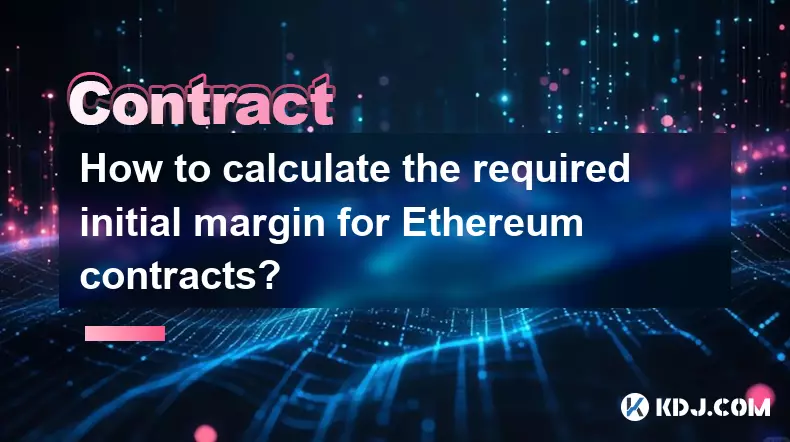
How to calculate the required initial margin for Ethereum contracts?
Oct 01,2025 at 06:01am
Understanding Initial Margin in Ethereum Futures1. The initial margin for Ethereum futures contracts represents the minimum amount of capital a trader...
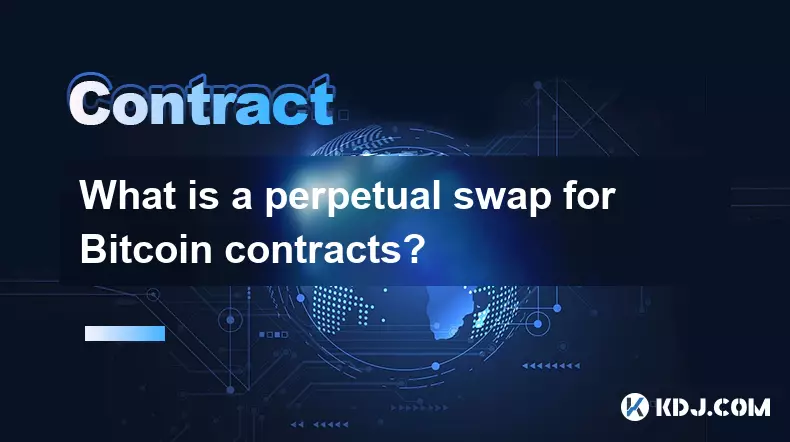
What is a perpetual swap for Bitcoin contracts?
Oct 01,2025 at 08:18am
Understanding Perpetual Swaps in Bitcoin Trading1. A perpetual swap is a type of derivative contract that allows traders to speculate on the price of ...

What is the best platform for trading SOL contracts?
Oct 01,2025 at 06:36am
Understanding the Role of Decentralized Exchanges in Modern Crypto Trading1. Decentralized exchanges (DEXs) have reshaped how traders interact with di...

How to short sell Bitcoin using futures contracts?
Oct 01,2025 at 02:54am
Understanding the Role of Decentralized Exchanges in Crypto Trading1. Decentralized exchanges (DEXs) have become a cornerstone of the cryptocurrency e...
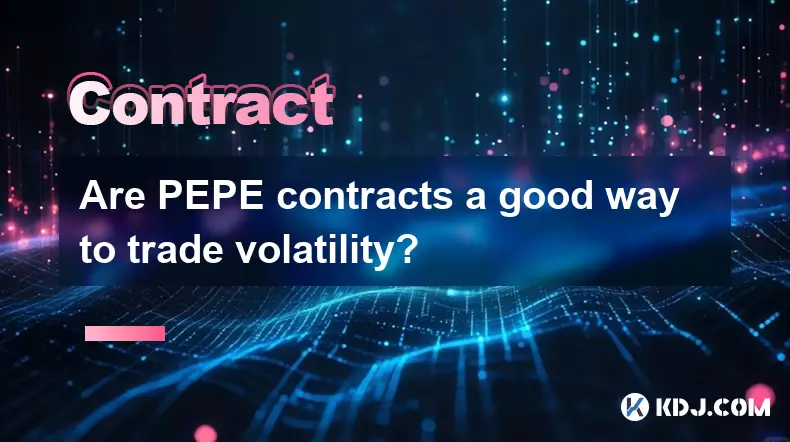
Are PEPE contracts a good way to trade volatility?
Oct 01,2025 at 04:18am
Understanding PEPE Contracts in the Cryptocurrency Market1. PEPE contracts, derived from the broader meme coin movement, have gained attention due to ...
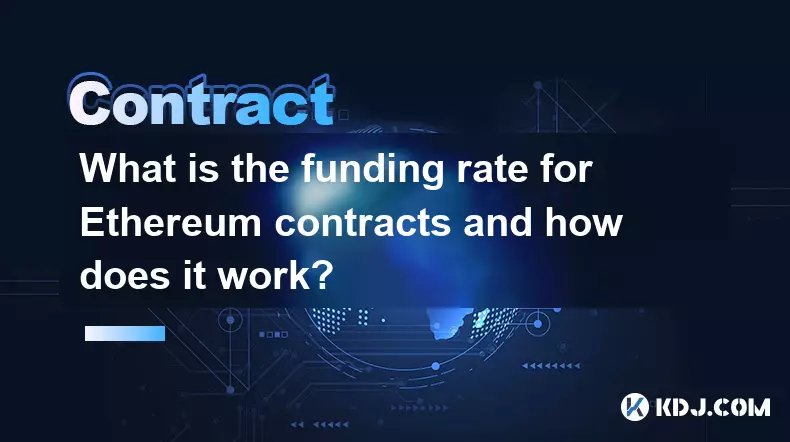
What is the funding rate for Ethereum contracts and how does it work?
Oct 01,2025 at 10:54am
Funding Rate Mechanism in Ethereum Derivatives1. The funding rate is a periodic payment exchanged between long and short positions in perpetual future...

How to calculate the required initial margin for Ethereum contracts?
Oct 01,2025 at 06:01am
Understanding Initial Margin in Ethereum Futures1. The initial margin for Ethereum futures contracts represents the minimum amount of capital a trader...

What is a perpetual swap for Bitcoin contracts?
Oct 01,2025 at 08:18am
Understanding Perpetual Swaps in Bitcoin Trading1. A perpetual swap is a type of derivative contract that allows traders to speculate on the price of ...

What is the best platform for trading SOL contracts?
Oct 01,2025 at 06:36am
Understanding the Role of Decentralized Exchanges in Modern Crypto Trading1. Decentralized exchanges (DEXs) have reshaped how traders interact with di...

How to short sell Bitcoin using futures contracts?
Oct 01,2025 at 02:54am
Understanding the Role of Decentralized Exchanges in Crypto Trading1. Decentralized exchanges (DEXs) have become a cornerstone of the cryptocurrency e...

Are PEPE contracts a good way to trade volatility?
Oct 01,2025 at 04:18am
Understanding PEPE Contracts in the Cryptocurrency Market1. PEPE contracts, derived from the broader meme coin movement, have gained attention due to ...

What is the funding rate for Ethereum contracts and how does it work?
Oct 01,2025 at 10:54am
Funding Rate Mechanism in Ethereum Derivatives1. The funding rate is a periodic payment exchanged between long and short positions in perpetual future...
See all articles










































































